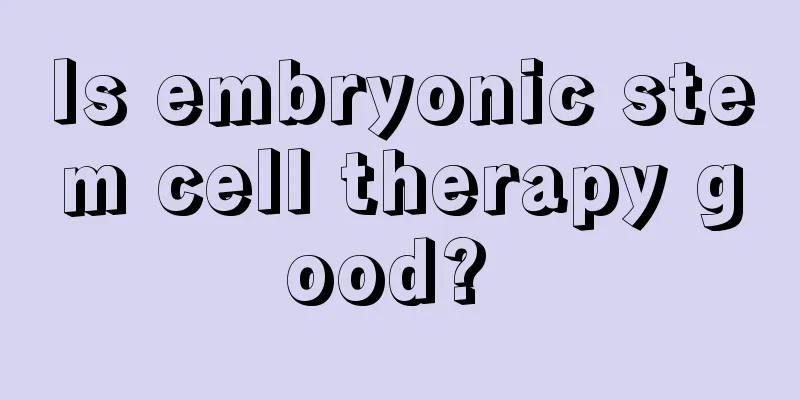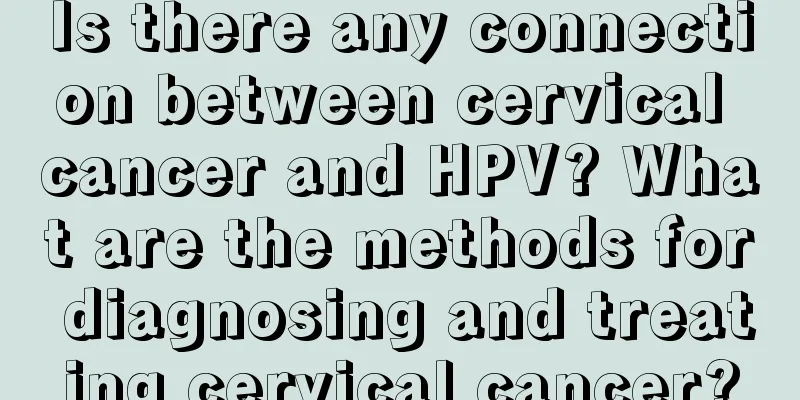Is embryonic stem cell therapy good?

|
With the continuous development of science and technology, the medical level in the world has been rapidly improved. In my country and some developed countries, the application of embryonic stem cell technology has also enabled more difficult-to-treat diseases to be completely conquered. Embryonic stem cells are a type of cell isolated from the primitive gonads of early embryos and are useful in many ways. So, what is the prospect of embryonic stem cell therapy? Therapeutic human embryonic stem cell populations Cell therapy refers to the direct transplantation or injection of genetically engineered human cells into the patient's body to cure and control the disease. ES cells can still stably proliferate and be propagated in vitro after genetic manipulation. Using ES cells as vectors and undergoing in vitro directed modification, the number of gene integration, sites, expression levels, stability of inserted genes and screening are all carried out at the cellular level, making it easy to obtain stable and satisfactory transgenic ES cell lines. This has opened up a new way to overcome the difficulties in controlling the integration and expression of introduced genes in gene therapy, and the difficulty in stably transfecting and proliferating cells used for genetic manipulation in vitro. Producing cloned animals Theoretically, ES cells can be propagated and proliferated indefinitely without losing their normal diploid genotype and phenotype. Using them as nuclear donors for nuclear transplantation, a large number of individuals with exactly the same genotype and phenotype can be obtained in a short period of time. Chimeric cloning of animals using ES cells and embryos can solve the difficult problem of distant hybridization in mammals and produce precious new species of animals. This technology can also be used to clone different species of animals, which is of great significance for the protection of rare wild animals. Production of transgenic animals The use of ES cells to produce transgenic animals can break the boundaries of species, overcome the limitations of kinship, accelerate the degree of genetic variation in animal populations, and enable directed variation and breeding. By using homologous recombination technology to genetically manipulate ES cells and produce genetically modified animals through nuclear transplantation, it is possible to create new species; using ES cell technology, embryos can be selected early at the cellular level, which can improve the accuracy of sampling and shorten breeding time. For organ tissue transplantation ES cells, a type of cell called "seed cells," provide a large amount of material for clinical tissue and organ transplantation. After the immune rejection genes of human ES cells are knocked out, they are directed to induce end-organs to avoid transplant rejection between different individuals. This may solve the problem of transplant rejection between allogeneic individuals that has been plaguing the immunology and medical communities. Revealing the developmental mechanisms and influencing factors of humans and animals The greatest mystery of life is how humans develop from a single cell into an incredibly complex organism. The establishment of human embryonic cell lines and research on human embryonic stem cells can help us understand the complex events in the human development process, enable us to gain a deeper understanding of some basic problems that have plagued embryologists for decades, and promote basic research on the details of human embryonic development. The in vitro manipulability of human embryonic stem cells provides a means to study very early events in human development at the cellular and molecular levels in an ethically acceptable manner. This type of research would not raise the ethical issues associated with fetal experimentation, because embryos cannot be formed from embryonic stem cells alone. Pharmaceutical research Embryonic stem cells can differentiate into a variety of cell types and are a source of cells that can continuously self-renew in culture. It develops into a biological system after embryogenesis, which can simulate the complex interactions between cells and tissues in vivo, which has a wide range of uses in the field of drug research. The advantage of embryonic stem cells that is expected to be demonstrated in the short term is in drug screening. Currently, cells used for drug screening are derived from animals or abnormal human cells such as cancer cells. Embryonic stem cells can be induced in vitro to provide humans with human cells of various tissue types, which makes more types of cell experiments possible. Although it will not completely replace experiments on whole animals and humans, it will make the drug development process more efficient. Once cell line experiments show that the drug is safe and effective, it is eligible for further animal and human experiments in the laboratory. In the pharmacological effects and toxicity tests of candidate drugs on various cells, embryonic stem cells provide a cellular level research method for studying the pharmacology, efficacy, toxicology and pharmacokinetics of new drugs, greatly reducing the number of animals required for drug testing and reducing costs. In addition, because embryonic stem cells resemble cells from an early embryo, they could potentially be used to reveal which drugs interfere with fetal development and cause birth defects. Human embryonic stem cells can also be used for other purposes. Because these cells can essentially produce unlimited quantities of human cells, they should be useful for research projects aimed at discovering rare human proteins. Many international pharmaceutical companies and scholars have targeted this important research field. Vectors for cell replacement therapy and gene therapy The most attractive prospect and use of embryonic stem cells is the production of tissues and cells for "cell therapy" and to provide non-immunogenic materials for cell transplantation. Any disease that involves the loss of normal cells can be treated by transplanting specific tissue cells differentiated from embryonic stem cells. For example, nerve cells are used to treat neurodegenerative diseases (Parkinson's disease, Huntington's disease, Alzheimer's disease, etc.), pancreatic islet cells are used to treat diabetes, and cardiomyocytes are used to repair necrotic myocardium. Embryonic stem cells are also the most ideal target cells for gene therapy. Gene therapy here refers to the direct transplantation or injection of genetically modified human cells into the patient's body to achieve the purpose of controlling and curing the disease. This genetic modification involves correcting a gene mutation that exists in the patient or delivering the desired genetic information to certain specific cell types. Of course, the ideal stage of stem cell technology is to achieve “organ cloning” in vitro for transplantation into patients. If this concept can be realized, it will be a landmark achievement in human medicine. It will industrialize organ cultivation and solve the problem of insufficient sources of donor organs; it will also specialize organ supply and provide patient-specific organs. Once any organ or tissue in the human body has a problem, it can be replaced and repaired as easily as replacing a damaged part. However, some experts pointed out that the research on embryonic stem cells is contrary to social ethics. Take human cloning as an example. If a person is cloned using embryonic stem cell technology one day, then that person’s own rights and interests will be affected. If the person who copies is a bad person, then the harmony of this society will be broken. Therefore, this technology is still questionable. |
<<: What are the pathological and physiological causes of nephrotic syndrome
>>: Can I be infected with AIDS if I have leukemia?
Recommend
What are some things men should pay attention to when preparing to get pregnant?
For men who are preparing for pregnancy, an impor...
What are the advantages of TCM in treating advanced liver cancer? What is the cure rate of early liver cancer?
What are the advantages of TCM in treating advanc...
What foods can help boost immunity?
The strength of the human immune mechanism can al...
What is the reason for low platelet distribution width?
A low platelet distribution width may be caused b...
Will regular exercise improve my skin?
Most people like beautiful skin because it can ma...
What are the effects of canned yellow peaches
Canned yellow peaches are actually a kind of cann...
What to do if leather clothes are moldy
Leather jackets are very common clothing. Such cl...
How to draw eyebrows with eyebrow pencil for beginners
If you observe carefully, you will find that many...
How to treat advanced squamous cell carcinoma of lung cancer? You can consider these treatment options
In the late stage of squamous cell carcinoma of l...
What are the symptoms of diabetic ketoacidosis?
Ketoacidosis can be said to be a very common dise...
How to remove rust from white clothes
It is very common in daily life for clothes to be...
What happens if you drink alcohol when you have a cold? It turns out the harm is so great
Colds are a common disease in daily life. Imprope...
What are the benefits of boiling fresh dandelion in water?
Dandelion is a common plant in daily life. It is ...
My left hand suddenly went numb, what happened?
Occasional numbness in the left hand is a very co...
What's going on with 50 shoulders
Many people suffer from frozen shoulder, which ac...









